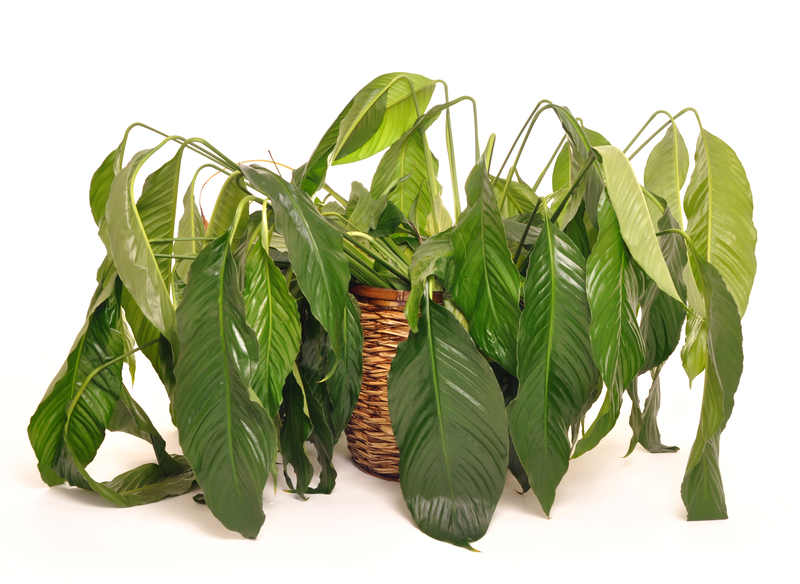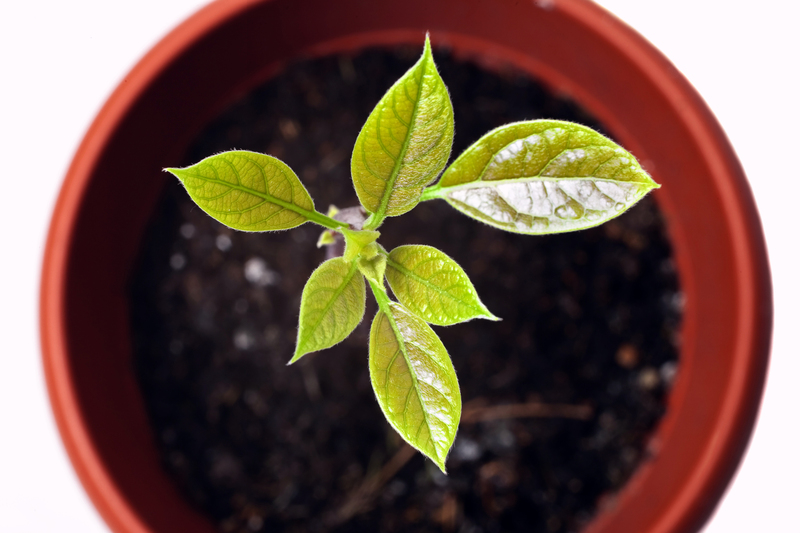Weed-Free Spaces: 3 Tips You Need to Know
Posted on 05/06/2025
Weed-Free Spaces: 3 Tips You Need to Know for a Pristine Garden
Weeds can turn any beautiful garden, yard, or outdoor space into a chaotic, overgrown headache. Not only do they rob your plants of essential nutrients and water, but they can also ruin the aesthetic appeal of your landscaped spaces. The good news? With the right gardening practices, you can enjoy weed-free spaces all year round. In this comprehensive article, we'll explore the top three tips that you absolutely need to know to prevent, manage, and eliminate weeds from your garden and outdoor areas. Whether you're a seasoned gardener or just starting out, these strategies will help you maintain clean, tidy, and inviting weed-free environments.
Why Weed-Free Spaces Matter
Before diving into the best tips for a weed-free garden, it's crucial to understand why controlling weeds is so important. Not only are weeds an eyesore, but they compete with your desired plants for water, nutrients, and sunlight. Over time, uncontrolled weeds can even attract pests or diseases that may harm your landscape further.
- Aesthetic Value: A weed-free yard or garden looks neat, lush, and welcoming.
- Healthier Plants: Reducing weed competition allows your chosen plants to thrive.
- Reduced Maintenance: Consistent weed management means easier up-keep in the long-term.
- Pest & Disease Control: Many garden pests and diseases start with weeds as hosts.
With these benefits in mind, achieving a weed-free space becomes a central goal for every homeowner and gardener.

Weed Prevention: The Key to Weed-Free Spaces
Prevention is always better than cure, especially when it comes to lawn and garden weeds. Rather than playing catch-up and constantly pulling or spraying unwanted plants, the best strategy is to prevent them from taking root in the first place.
Tip 1: Mulching -- Nature's Best Weed Blocker
One of the most effective ways to maintain weed-free landscaping is through regular mulching. Mulch acts as a natural barrier, blocking sunlight and preventing weed seeds from germinating.
- Organic Mulch: Materials like bark, wood chips, pine needles, leaves, or compost enrich the soil as they decompose and provide excellent weed suppression.
- Inorganic Mulch: Options such as gravel, landscape fabric, or rubber mulch can provide more durable cover for pathways and spaces where you don't want any growth.
How to Mulch Properly:
- Apply 2-4 inches of mulch to your flower beds, garden paths, or around shrubs and trees.
- Keep mulch away from direct contact with stems and trunks to prevent rot.
- Top up mulch annually, removing any weeds before adding new layers.
Mulching is one of the easiest and most effective weed control methods that helps maintain weed-free spaces effortlessly.
Tip 2: Smart Planting and Dense Coverage
Did you know that the way you arrange your plants can significantly reduce weed growth? Crowd out weeds with ground covers, dense plantings, and healthy grass.
- Ground Covers: Plants like creeping thyme, hostas, or ivy can cover open soil, leaving no room for weeds to sprout.
- Dense Spacing: Reduce the space between plants in your garden beds. Tightly planted areas create shade that inhibits weed seed germination.
- Thick Lawns: Keep your grass healthy and dense by overseeding bare spots and using proper mowing and fertilizing practices.
Remember, weeds thrive in bare, disturbed soil. The less open ground you leave, the less likely you are to see weeds proliferate.
Regular Maintenance: Consistency is Key for Weed-Free Gardens
Even the best prevention can't keep 100% of weeds out forever--some seeds will always find a way. That's why routine weed management is essential for truly maintaining weed-free spaces.
Tip 3: Timely Weeding and Smart Tools
Stay on top of weeding! The sooner you address weeds, the less work you'll have in the long run. Establish a regular schedule to inspect and clean up beds, borders, and lawns.
- Hand Weeding: For small gardens, use a hand fork or trowel to pull weeds, roots and all. This works best when soil is moist.
- Hoeing: A sharp hoe can quickly slice off young weeds right at the soil level for rapid maintenance.
- Weed Pullers: There are special tools designed for removing deep-rooted weeds like dandelion and thistle with minimal disturbance.
The goal is to remove weeds before they set seed. This prevents new generations from springing up all season long.
How Often Should You Weed?
- Weekly Patrol: Spend a quick 5-10 minutes a week checking garden beds and removing visible weeds.
- Monthly Deep Clean: Every month, devote more time to a thorough survey and removal session, especially during peak growing seasons.
- After Rain: Weeds come out easier and new ones are more visible right after rainfall.
Regular attention is what transforms a weed-prone space into a weed-free environment. Persistence pays off!
Additional Strategies for Weed-Free Yards & Gardens
While mulching, dense planting, and regular weeding form the backbone of the weed-free approach, there are some extra tricks to keep your garden impeccable:
- Edge Your Beds: Install physical barriers, like metal, plastic, or stone edging, to prevent invasive grasses and weeds from creeping in.
- Limit Soil Disturbance: Every time you dig or till, dormant weed seeds are exposed and may germinate. Only dig where necessary.
- Choose Quality Seeds & Plants: Use certified weed-free seeds, plants, compost, and soil to avoid introducing new weeds to your space.
- Water Smartly: Use drip irrigation to direct water only at your plants, not weed seedlings between rows or beds.
- Solarize Weedy Areas: For persistent weed infestations, cover soil with clear plastic for a few weeks in hot weather to cook weed seeds before planting.
- Use Cover Crops: In vegetable gardens, plant cover crops during the off-season to prevent winter and early spring weeds.
Eco-Friendly Weed Control Methods
If you're committed to a chemical-free, environmentally-friendly garden, avoid herbicides and try these organic solutions:
- Boiling Water: For cracks in walkways or driveways, carefully pour boiling water to kill weeds at the root.
- Vinegar Solution: Household vinegar can burn annual weeds on sidewalks and patios (but takes care, as it harms regular plants too).
- Hand Pulling: Nothing beats physically removing weeds, especially before they flower and seed.

Frequently Asked Questions About Weed-Free Spaces
1. Can I have a garden that is 100% weed-free?
Completely weed-free gardens are rare, because weed seeds blow in or travel on animal fur, shoes, and even garden tools. However, by applying these weed prevention and control techniques, you can minimize outbreaks and enjoy a nearly weed-free space.
2. Is it better to pull weeds or hoe them?
Hand-pulling ensures you remove the entire root of perennial weeds, preventing regrowth. Hoeing is fast for annual weeds and newly sprouted weed seeds but may leave roots of perennials behind. For the best weed-free results, combine methods as needed.
3. How much mulch should I use for weed control?
Spread 2-4 inches of organic mulch for effective weed suppression. Too little won't block sunlight for weed seeds, and too much can suffocate plant roots. Always refresh mulch each year for maximum results.
4. Are landscape fabrics effective?
Landscape fabrics can block weeds in pathways and ornamental beds, but weeds can still grow in soil or mulch on top unless maintained. They're best used under rock gardens, not in perennial beds where you'll want to replant regularly.
Conclusion: Create a Weed-Free Oasis
Maintaining weed-free gardens and outdoor spaces is more than a one-time chore--it's an ongoing process that pays off with lush, healthy plants and beautiful landscapes. By implementing smart strategies like mulching, dense planting, and regular weeding, you'll create inviting, low-maintenance weed-free outdoor areas that are the envy of your neighborhood.
- Mulch Your Beds to prevent weeds from ever taking root.
- Plant Smartly to crowd weeds out naturally.
- Weed Regularly to stop problems before they get out of hand.
Adopting these three essential weed-free gardening tips will transform your garden from a weed battleground into a peaceful retreat. Start today, and enjoy the unmatched beauty and harmony of a truly weed-free space!

